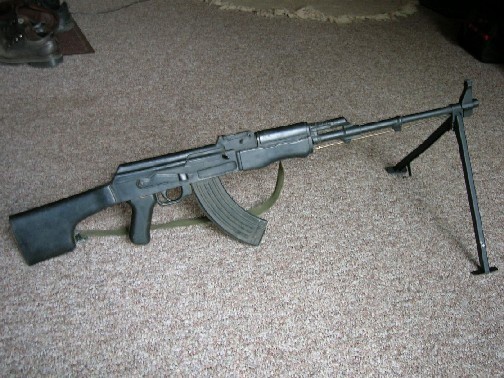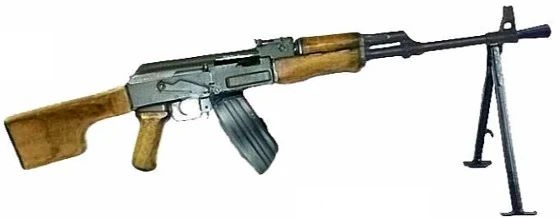TUL-1
| Factions | Weapon | Icon | Classes | Ammo |
|---|---|---|---|---|
 VC |
 TUL-1 |
 |
40+1 / 120 |
| Damage Base | Headshot × | Chest × | Stomach × | Leg × | Arm × | Bayonet | Rifle Grenades | Reload Speed | |
|---|---|---|---|---|---|---|---|---|---|
| Partial | Empty | ||||||||
| 41 | ×2.52 = 103.32 | ×1.2 = 49.2 | ×1.15 = 47.15 | ×0.8 = 32.8 | × = 30.75 | NO | NO | 2.433 Seconds | 3.2 Seconds |
| Designation | Weapon Type | Fire Modes | Fire Rate | Bullet Spread ° | Bipod Bullet Spread ° | Range Modifier | Muzzle Velocity | Projectile weight | Weight |
|---|---|---|---|---|---|---|---|---|---|
| TUL-1 | LMG | Auto+Semi | 600 RPM | 7.47° & 1.87° ADS | 2.47° & 1.02° ADS | 0.940 | 745 m/s | 7.9 g (121.9 gr) | 4.8 kg (10.6 lbs) |
| Full name | Caliber | Place of Origin | Date | Manufacturer | Barrel Length | Total Length | Weapon Script Name |
|---|---|---|---|---|---|---|---|
| TUL-1 | 7.62x39mm | North Vietnam | 1970 | Vietnam Workshops | 23.22 in (590 mm) | 40.94in (1,040 mm) | weapon_tul1 |
The TUL-1 is a Vietnamese light machine gun developed from the QBZ56 in an attempt to recreate the RPK, a light machine gun, of which Vietnam were running short on. The TUL-1 appears to still be in service with some units in the People's Army of Vietnam.
HISTORY
Vietnamese TUL-1 light machine gun used the frame of Chinese Type 56 assault rifle but with stock of an RPK, barrel sights from an RPD and 30-round magazine used on the AK-47/Type 56, there are rare 40-round magazines. The TUL-1 body was thin, only 1 mm compared to the 1.5 mm of an RPK. It was also heavier and had an inferior rate of fire compared to the RPK. However, the firing rate and effective range of the weapon was successfully better than that of an AK-47/Type 56.
During the Vietnam War, the North Vietnamese Army had seen an increased need for firearms. Due to known tensions between the United States, and the Soviet Union, North Vietnam would have been unable to purchase mass arms directly from the Soviet Union, as many weapons could be passed down to guerrilla Việt Cộng forces who could operate in South Vietnam.
To counter this, local Vietnamese gunsmiths were able to replicate the RPK with a wide amount of Chinese QBZ56 parts, which were smuggled in from China due the shared border. Wooden furniture was either handmade or procured from an actual RPK. The TUL-1 LMGs were manufactured between 1970–1974 and ended after Vietnam obtained production rights to the RPK itself.
SOURCE
SOURCE



